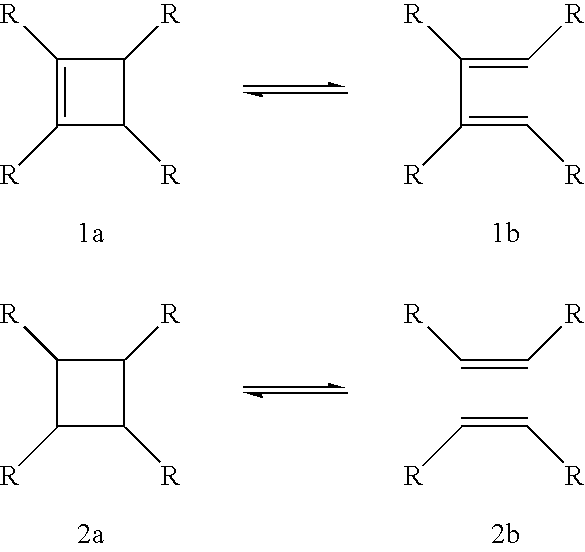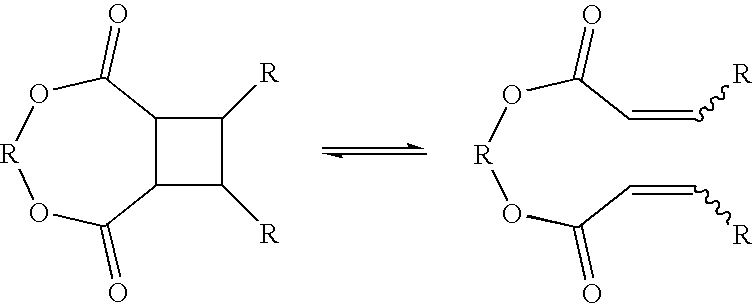Optical recording material
a technology of optical recording and material, applied in the field of optical recording elements, can solve the problems of inability to record information in time, inability to record data, and inability to meet the needs of users, so as to improve the permanence of recorded information, improve the effect of effective concentration of reactant and improve the performance of the media
- Summary
- Abstract
- Description
- Claims
- Application Information
AI Technical Summary
Benefits of technology
Problems solved by technology
Method used
Image
Examples
example 1
Optical Recording Element 1
[0085]A solution of 0.9 g of the Polymer 2, 0.1 g of dibutyl phthalate (plasticizer), and 0.003 g of sensitizer S-2 in 4.0 mL of dichloromethane was hand-coated on a poly(ethylene terephthalate) support using a 125 μm doctor blade. The element was protected from UV and blue light at all times. The element was dried for 15 min. at room temperature, cut into 5×5 cm. squares, mounted in metal frames, and then dried further at 40° C. for 1 hour in a vacuum oven. The sample was exposed using the Optical Recording Procedure, above, and a diffraction efficiency of 2% was obtained.
[0086]The above results show that a pattern of refractive index change can be recorded in the materials of the invention.
Optical Recording Element 2
[0087]The procedure of Optical Recording Element 1 was followed, except using Polymer 6, and omitting dibutyl phthalate. A diffraction efficiency of 4% was obtained.
[0088]The above results show that a pattern of refractive index change can be...
PUM
| Property | Measurement | Unit |
|---|---|---|
| thickness | aaaaa | aaaaa |
| thickness | aaaaa | aaaaa |
| excitation energy | aaaaa | aaaaa |
Abstract
Description
Claims
Application Information
 Login to View More
Login to View More - R&D
- Intellectual Property
- Life Sciences
- Materials
- Tech Scout
- Unparalleled Data Quality
- Higher Quality Content
- 60% Fewer Hallucinations
Browse by: Latest US Patents, China's latest patents, Technical Efficacy Thesaurus, Application Domain, Technology Topic, Popular Technical Reports.
© 2025 PatSnap. All rights reserved.Legal|Privacy policy|Modern Slavery Act Transparency Statement|Sitemap|About US| Contact US: help@patsnap.com



